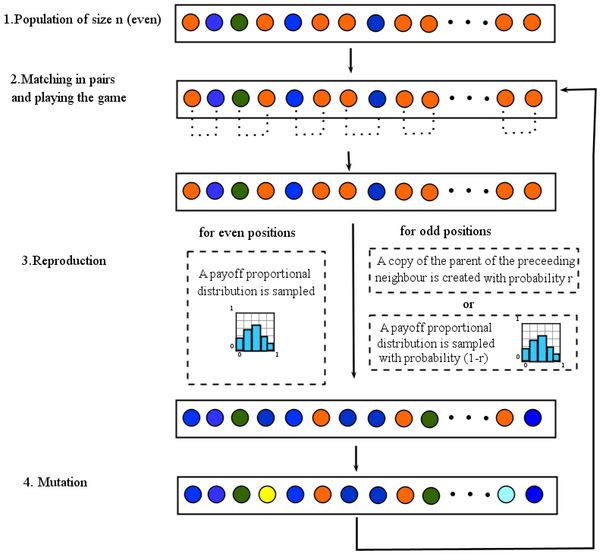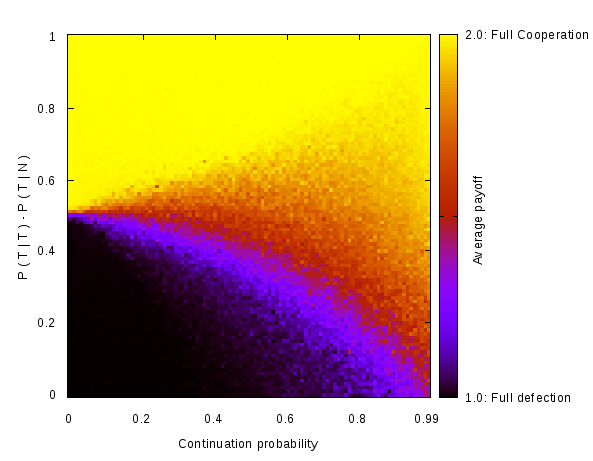Repeated Games and Population Structure
From Evolution and Games
(Difference between revisions)
(→Lifecycle) |
(→Lifecycle) |
||
| Line 6: | Line 6: | ||
== Lifecycle == | == Lifecycle == | ||
| - | The following figure represents the lifecycle in the computer program. In '''step one''' we start with an even-sized population of finite state automata (initial population is made out of ALLD strategies). | + | The following figure represents the lifecycle in the computer program. |
| + | |||
| + | * In '''step one''' we start with an even-sized population of finite state automata (initial population is made out of ALLD strategies). | ||
| + | * In '''step two''' individuals are matched in pairs to play the game - your are matched with your rightmost neighbor. The game is played between each pair of matched players, a one-shot game is played for sure and from then on the one-shot game is repeated with probability <math>\delta</math>. | ||
| + | * In '''step three''' reproduction takes place, a payoff proportional distribution is constructed. To fill up the next population we proceed in the following manner: with probability <math>1-r</math> the distribution is sampled, with probability <math>r</math> a copy of the parent of your left neighbor is created (this takes care of assortment). | ||
| + | * Finally, in '''step four''', every individual can mutate with a given probability. From then we go back to matching, and so on. | ||
<center> | <center> | ||
Revision as of 14:08, 7 June 2010
Contents |
Run the simulations
You can download the software here. Once the program is running just click on the big play button to start the fun. Feel free to re-arrange and re-size the windows, zoom-in and out as the program is running. Click here if you need more information about running this program.
Lifecycle
The following figure represents the lifecycle in the computer program.
- In step one we start with an even-sized population of finite state automata (initial population is made out of ALLD strategies).
- In step two individuals are matched in pairs to play the game - your are matched with your rightmost neighbor. The game is played between each pair of matched players, a one-shot game is played for sure and from then on the one-shot game is repeated with probability δ.
- In step three reproduction takes place, a payoff proportional distribution is constructed. To fill up the next population we proceed in the following manner: with probability 1 − r the distribution is sampled, with probability r a copy of the parent of your left neighbor is created (this takes care of assortment).
- Finally, in step four, every individual can mutate with a given probability. From then we go back to matching, and so on.


